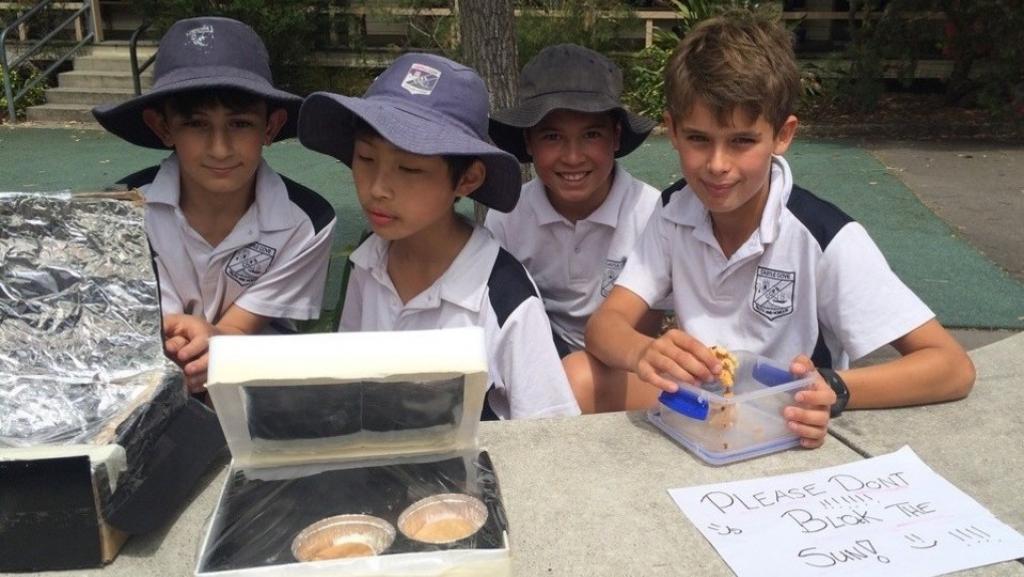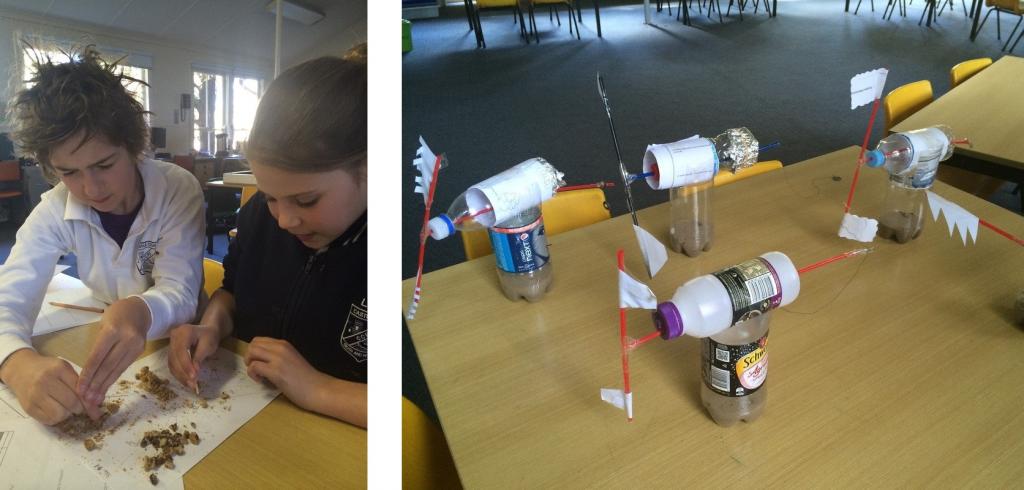Windmills and solar ovens
Year 5-6 classroom case study: renewable energy
Teacher: Anjali Rao, Specialist Science teacher
School description: Castle Cove Public School, North Shore Sydney, 490 students.
Curriculum objectives
Stage 3 students studied renewable energy with the aim of discovering a way to cook a S'more leaving the smallest possible carbon footprint and generating the least amount of greenhouse gases. This unit was undertaken over eight to nine weeks.
Students studied climate change and its causes and considered why it is important to think about our carbon footprint. They explored how we use energy and examined alternatives to fossil-fuel-generated electricity, including wind turbine blade design and solar-powered cars.
The final task was to design and build a solar oven to cook their own S’Mores.
Teaching and learning process
Students learned about the energy basics - What is energy? Some of the concepts investigated include:
- Definitions of different types of energy – ‘kinetic’ and ‘potential’ and examples of each.
- Learning the difference between ‘type of energy’ and ‘source of energy’.
- Distinguishing between renewable and non-renewable sources of energy.
- Reviewing the statistics on the percentage of energy produced from renewable sources in Australia and around the world.
- Explaining the (natural) greenhouse effect from atmosphere on Earth and its influence on our climate.
- Explaining the enhanced greenhouse effect and considering the sources of increased emissions of greenhouse gases - power generation, agriculture, transport etc.
- Using the chocolate chip coal mine activity to illustrate other impacts of coal mining.
- Investigating renewable sources of energy – wind, water and solar.
- Investigating different types of wind turbine blade design and their impact on turbine speed.
- Investigating solar-powered cars and the impact of angle of solar panel on speed of cars.
- Designing, building and using solar ovens consisting of shoe boxes, foil, black paper and mirrors.
Outcomes
- Students gained an appreciation of the economic and environmental costs of generating and using power. When they commenced the unit many of them did not see the link between their personal use of electricity at home and how it was produced.
- The students began to understand the link between fossil fuel generation and use and climate change.
- It was very useful to clarify misconceptions and misunderstandings about general ‘pollution’ and climate change.
- Students were able to understand how mining for fossil fuels (specifically coal) had an impact that went beyond greenhouse gas emissions.
- Working in groups to design, test, build and use solar ovens encouraged students to consider many technology outcomes and encouraged cooperative and collaborative learning and creativity.
Reflections
This unit was structured as a project-based learning unit, where the ultimate aim was for students to cook marshmallow and biscuit sandwiches without generating any greenhouse gas emissions during the process. We were able to discuss the serious issues – climate change and the impacts of energy generated using fossil fuels – through an engaging experiment and an enjoyable end product.
I deliberately planned lots of hands-on investigations throughout the unit – chocolate chip coal mining, wind turbine design, solar-powered cars – and, as a result, overall student engagement was very high during the term.
Resources
Cool Australia website: www.coolaustralia.org
Powerpoint on Energy: www.coolaustralia.org/activity/year-5-6-energy-the-basics-powerpoint
Activity – Chocolate Chip Coal Mine: www.coolaustralia.org/activity/choc-chip-biscuit-coal-mine-grade-5-6
Origin Energy Energy Savers website: http://originenergy.com.au/energysavers
State frameworks
ST3-1VA shows interest in and enthusiasm for science and technology, responding to their curiosity, questions and perceived needs, wants and opportunities
ST3-2VA demonstrates a willingness to engage responsibly with local, national and global issues relevant to their lives, and to shaping sustainable futures
ST3-3VA develops informed attitudes about the current and future use and influence of science and technology based on reason
ST3-4WS investigates by posing questions, including testable questions, making predictions and gathering data to draw evidence-based conclusions and develop explanations
ST3-5WT plans and implements a design process, selecting a range of tools, equipment, materials and techniques to produce solutions that address the design criteria and identified constraints
ST3-6PW describes how scientific understanding about the sources, transfer and transformation of electricity is related to making decisions about its use
ST3-14BE describes systems in built environments and how social and environmental factors influence their design

